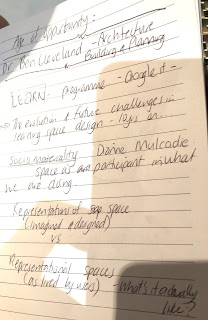29/04/19
Keynote: Dr Melinda Webber
Ngaapuhi & Te Arawa
"Optimising Maaori success and potential"
Ukaipo - a place of belonging
What should success look like?
- Need to acknowledge the identity
- maaori students know they are descended from ancestral heroes
- whakapapa
Stereotype Threat ( Steele, 1997)
Durie,1997, p156
Stereotype threat is the fear
Stop being Maaori or stop being Smart?
Maaori students need access to programmes of learning that affirm and promote Maaori theories, Maaori knowledge, Maaori heroes/role models and Maaori worldview.
To whakamana - maaori students
Different contexts demand different behaviours.
Localised differences
Key research questions
- How does Te Arawa define Maaori success?
- In what ways fo whaanau, teachers and the wider Te Arawa community foster conditions that enable success to manifest?
- How is mana enacted by Te Arawa students? To what effect?
Ask students about someone that inspires them and describe that person in five words?
Embedded achievement- I am a success because I'm Maaori.
Maui - nanakia - cheeky
Need to see the mana in every child.
Quality 2
Successful Maaori students are diligent and have an internal locus of control.
Characteristics
Patience, commitment and a sacrifice of time and effort; an ability to overcome difficulties; resolute confidence often balanced with a quiet,
Quality 3
Successful Maaori students learn how to nurture strong relationships.
Characteristics
The ability to sustain relationships that are premised on a balance of assertiveness and warmth (manaaki) because this provides sustenance for the inner person.
- encouraging
- willing to learn from others
- wiling to mentor others
- aware of their
Quality 4
Successful Maaori students are curious and innovative
Characteristics
An enquiring mind which probes, draws conclusions and makes associations; an exploratory orientation that is exploited in social and academic activities.
Application to school & work
- courageous
- competitive
- curious
Quality 5
Successful Maaori students look after their wellbeing.
Attention to physical, spiritual and mental health needs that are needed to flourish at school, affirming the inexplicable link between wellness and learning.
Quality 6
Successful Maaori students are committed to advancing their own knowledge. They are scholars who know where they want to go and persevere to achieve their goals.
An aptitude for things scholarly and commitment to excellence is evident. An intrinsic desire to learn and an innate curiosity.
Application to school & work
- can apply themselves
- driven
- purposeful
- aspirational
Coming home and being in-service to their whaanau is important to Maaori students.
Quality 7
Successful Maaori students possess humility
Characteristics
A quality which is often a cultural point difference because it is about service to others, generosity of spirit and putting others before the self
- puts others before self
- accept criticism
- work in service to others
- team player
Quality 8
Successful Maaori students understand core Maaori values
An ability to model the most meaningful qualities in Maaori culture, portrayed by way of Aroha (love) manaaki (care) and wairua (spirituality)
Application to school & work
Manaakitanga - ability to care and be hospitable to others
Kotahitanga - ability to commit to a kaupapa/vision
Wairuatanga - moral compass and sense of social justice
The Mana Model- Macfarlane, Webber, Cookson-cox, & McRae (2014)
Mana Tangatarua the skill, knowledge and confidence to
navigate success in two (or more) worlds
Mana Tuu
Mana Motuhake
Mana ūkaipō Belonging and connection to place
Mana Whaanau
New study: Project
Kia tuu rangatira ai ngaa iwi Maaori: living, succeeding, and thriving as Iwi Maaori.




















